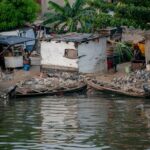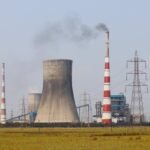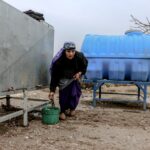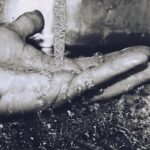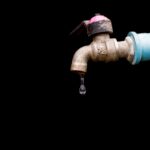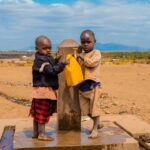Water Accessibility – Empowering Communities Through Sustainable Solutions
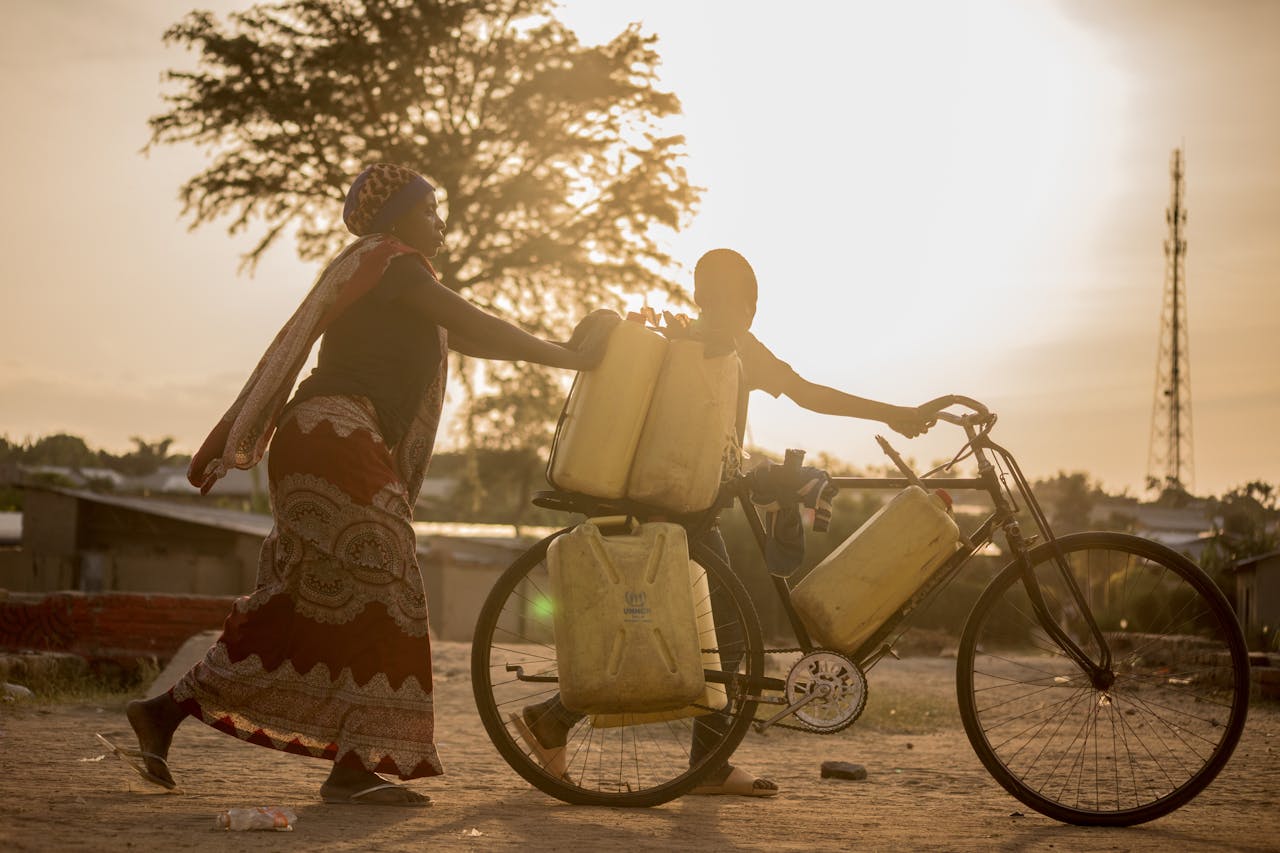
Across the world, access to water tells stories we rarely hear. Stories of hope, struggle, and human resilience. Water is more than just a liquid in a glass. It’s a lifeline that connects every single human experience.
Water doesn’t care about borders, bank accounts, or backgrounds. It flows through cities and villages, touching rich and poor alike. But access? That’s where the real story begins.
Some people open a tap and water rushes out, clear and clean. Others spend hours searching for a single safe drink. This isn’t about geography. It’s about opportunity.
Our world isn’t divided by continents or countries. It’s divided by water. Some have it in abundance. Others fight for every drop.
This isn’t just a problem to solve. It’s a human story waiting to be rewritten. A story where clean water isn’t a luxury, but a basic right for everyone.
Every drop carries a possibility. Every water source can spark a community’s transformation.
Our journey isn’t about numbers or statistics – it’s about understanding how something as simple as water can change everything.
Understanding Water Accessibility
What makes water truly accessible? It’s more than just having water nearby. Real water access means:
• Water that is safe to drink
• Water that doesn’t make you sick
• Water you can afford
• Water close enough to get easily
• Water available when you need it
People face different water challenges depending on where they live:
• Urban areas might have pipes but poor water quality
• Rural regions might lack any water infrastructure
• Remote communities might depend on single water sources
• Some areas face seasonal water shortages
Barriers to water access include:
• Lack of money to build water systems
• Broken or old infrastructure
• Political conflicts
• Climate changes
• Water pollution
• Unequal resource distribution
The Human Cost of Water Challenges
Dirty water kills more people than most wars. Every year, nearly 300,000 children under five die from diseases linked to poor water and sanitation.
Health problems from bad water include:
• Diarrhea
• Cholera
• Typhoid
• Hepatitis A and E
• Parasitic infections
These aren’t just illnesses. They’re roadblocks to human potential. When people get sick from water:
• Children miss school
• Parents can’t work
• Family savings go to healthcare
• Future opportunities shrink
Water problems hit children the hardest. A child who is constantly sick can’t learn properly. Their growth gets stopped. Their dreams get delayed.
Community-Centered Approaches
The best water solutions come from the people who need them most. Communities understand their challenges better than anyone from the outside.
Successful community water approaches share key ideas:
• Local people make decisions
• Solutions match the specific environment
• Communities own and manage water systems
• Everyone gets training
• Women play key leadership roles
What does this look like in real life?
• Local water management committees
• Training programs for water system repairs
• Community-owned wells and water points
• Local teams maintaining water infrastructure
• Sharing water management skills
When communities lead water projects, something powerful happens. They don’t just get water. They gain:
• Confidence
• New skills
• Economic opportunities
• Stronger community connections
• Hope for the future
A water project isn’t just about pipes and wells. It’s about giving people the tools to improve their own lives.
Technology and Innovation
Technology is turning water challenges into solvable problems. Smart inventions are changing how communities get and use water.
Some breakthrough solutions include:
• Solar-powered water purification systems
• Portable filters that can clean almost any water
• Devices that pull water from air
• Smart apps that track water quality
• Low-cost desalination tools
LifeStraw is a great example and quite popular too. This small device can turn dirty water into safe drinking water. It’s cheap, portable, and can clean thousands of liters.
Communities are creating local tech solutions:
• Simple rainwater collection systems
• Underground water storage
• Local water testing kits
• Community-built water tracking tools
These technologies are keys that unlock water access for entire communities.
Sustainable Water Infrastructure
Although it’s true that building water systems is about pipes and wells, it doesn’t stop there. It’s also about creating solutions that last and work for people.
Key principles of sustainable water infrastructure:
• Design systems that match local needs
• Use local materials when possible
• Train community members to maintain systems
• Create backup and emergency plans
• Build systems that can adapt to changes
Successful water systems:
• Are affordable to build and maintain
• Use local skills and knowledge
• Can be repaired with local resources
• Protect water sources
• Involve the entire community
A good water system does more than deliver water. It:
• Creates local jobs
• Builds community skills
• Increases local independence
• Protects health
• Opens up new opportunities
Economic Empowerment Through Water
Water is an economic game-changer. When communities get reliable water, everything can change.
Economic benefits of water access:
• More time for work and learning
• Reduced healthcare costs
• Increased agricultural productivity
• More stable local businesses
• Better education opportunities
Real-world economic impacts:
• Farmers can grow more crops
• Children spend more time in school
• Women can start small businesses
• Local health improves
• Community income increases
Every dollar spent on water infrastructure is an investment in human potential.
Environmental Considerations
Water and the environment are deeply connected. Protecting water means protecting entire ecosystems.
Key environmental water strategies:
• Protecting water sources
• Preventing water pollution
• Conserving water resources
• Adapting to climate changes
• Supporting local ecosystems
Communities are finding smart ways to:
• Collect rainwater
• Recycle water for multiple uses
• Protect local water sources
• Create green water management systems
• Work with nature, not against it
Climate change makes water protection more important. Communities are learning to:
• Use water more carefully
• Develop drought-resistant approaches
• Protect water sources
• Create backup water plans
• Share water resources fairly
Education and Water Literacy
Knowledge is the most powerful water tool. When communities understand water, they can protect and manage it better.
Water education goes beyond basic hygiene:
• Understanding water cycles
• Learning about local water sources
• Tracking water quality
• Basic water system maintenance
• Health and sanitation practices
Training programs teach communities to:
• Test water safety
• Repair simple water systems
• Protect water sources
• Manage water resources
• Create local water management plans
Schools become key water learning centers:
• Teaching water conservation
• Training young water experts
• Creating community awareness
• Developing local water solutions
• Sharing knowledge between generations
Funding and Support Models
Money can make or break water projects. But smart funding goes beyond simple donations.
New funding approaches include:
• Community-owned water funds
• Micro-investment models
• Local savings groups
• Government partnership programs
• Technology-enabled fundraising
Successful funding models:
• Give communities control
• Create long-term sustainability
• Build local financial skills
• Support ongoing maintenance
• Encourage local ownership
Success Stories: Real Communities, Real Change
India’s Water Management: Hiware Bazar’s Transformation
In Maharashtra, India, the Hiware Bazar village became a water management miracle. In the 1990s, this was a drought-stricken area with almost no agriculture.
Sustainable steps included:
• Community-wide water conservation
• Building check dams and water storage
• Changing farming techniques
• Creating strict water management rules
Results are stunning:
• More millionaires in the village
• Farming income increased massively
• Reverse migration
• Runoff stopped
• Increased number of wells and irrigated lands
Rajendra Singh, known as the “Water Man of India,” led similar projects across rural regions, turning dry lands into productive communities.
Brazil’s Água para Todos (Water for All) Program
In Brazil, as millions faced chronic water shortages, the national Água para Todos program took a revolutionary approach.
The 99% objective of the Brazilian Federal government – which approved a “specific new legal framework” in 2020 – is to ensure that 99% of the country’s population has access to drinking water and 90% to wastewater collection and treatment by 2033 (compared with 84% and 55%, respectively in 2023).
To achieve this goal, they decided to privatize water distribution and sanitation services in the State of Rio, which was previously managed by public operator Companhia Estadual de Aguas e Esgoto (CEDAE), by dividing the territory into 4 concessions.
Over the past three years in Mangueira favela, the area has undergone a real transformation, in terms of both health and social amenities. Virtually all the homes in Mangueira are now connected to the official water network – managed by a private operator Águas do Rio, a subsidiary of the Aegea Group – which provides access to safe, high-quality services.
Leaks are spotted in real time and repairs are carried out. Smart valves are being installed to remotely monitor leaks and water pressure effectively.
Rwanda: A National Water Transformation
After the 1994 genocide, Rwanda made water access a national priority. The government and communities worked together to rebuild water infrastructure.
Remarkable achievements:
• Increased water access
• Created community water management committees
• Developed national water protection policies
• Trained local water technicians
• Connected 90% of urban areas to clean water systems
These stories show a clear pattern: successful water projects happen when:
• A community is committed to improving their conditions.
• Local communities lead
• Traditional knowledge is respected
• Technology matches local needs
• People are trained and empowered
• Solutions are created with, not for, communities
Global Collaboration
Water doesn’t recognize borders. Global teamwork can solve local challenges.
Collaboration happens through:
• Sharing technology
• Training programs
• Research partnerships
• Knowledge exchange
• Joint funding efforts
Countries are learning from each other:
• Water management techniques
• Low-cost technologies
• Community engagement models
• Sustainable infrastructure designs
The Future of Water Accessibility
Tomorrow’s water solutions are already taking shape today.
Emerging approaches include:
• AI-powered water management
• Advanced filtration technologies
• Climate-adaptive water systems
• Community-driven innovations
• Integrated ecosystem approaches
The big vision: water access for everyone, everywhere.
Conclusion
Water is more than a resource. It’s a pathway to human potential.
When communities get water, they get:
• Better health
• More education
• Economic opportunities
• Stronger connections
• Hope for the future
This isn’t just about solving a problem – it’s about unlocking human creativity, resilience, and possibility. That is why it is of utmost importance to partner with non-profits like Aqua Maya, striving to make clean water accessible to as many communities as possible.
Every drop of water carries a story of human potential.
Sources
1. https://www.who.int/data/gho/indicator-metadata-registry/imr-details/1198
2. https://data.unicef.org/topic/water-and-sanitation/drinking-water/
3. https://www.mdpi.com/2077-0375/13/6/612
4. https://www.weforum.org/stories/2023/01/davos23-water-security-scarcity-technology-science-leakages/
5. https://www.iaea.org/sites/default/files/documents/tc/waterEnv_Eng.pdf
6. https://www.downtoearth.org.in/environment/hiware-bazar–a-village-with-54-millionaires-4039
“>

